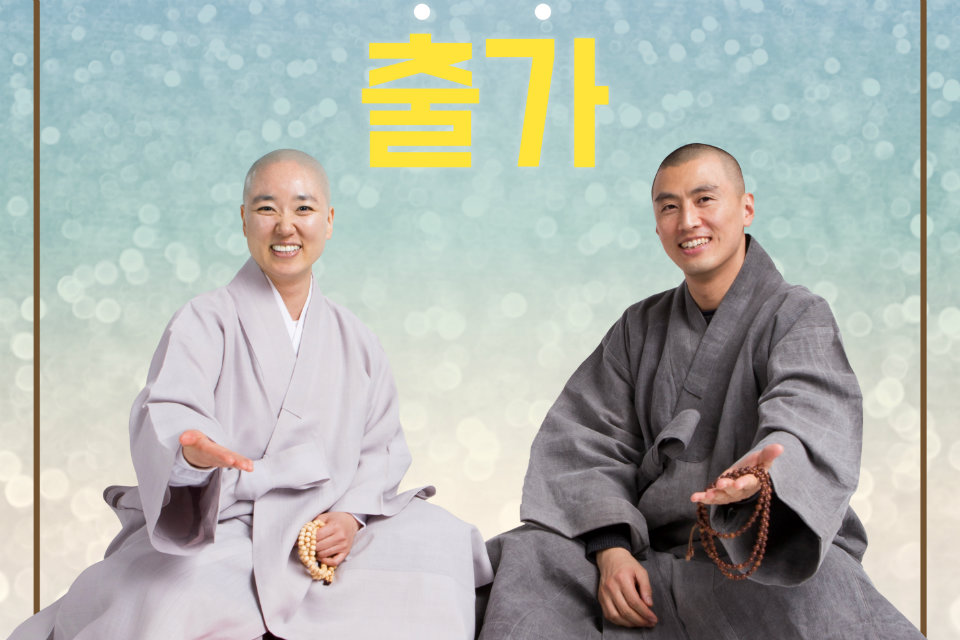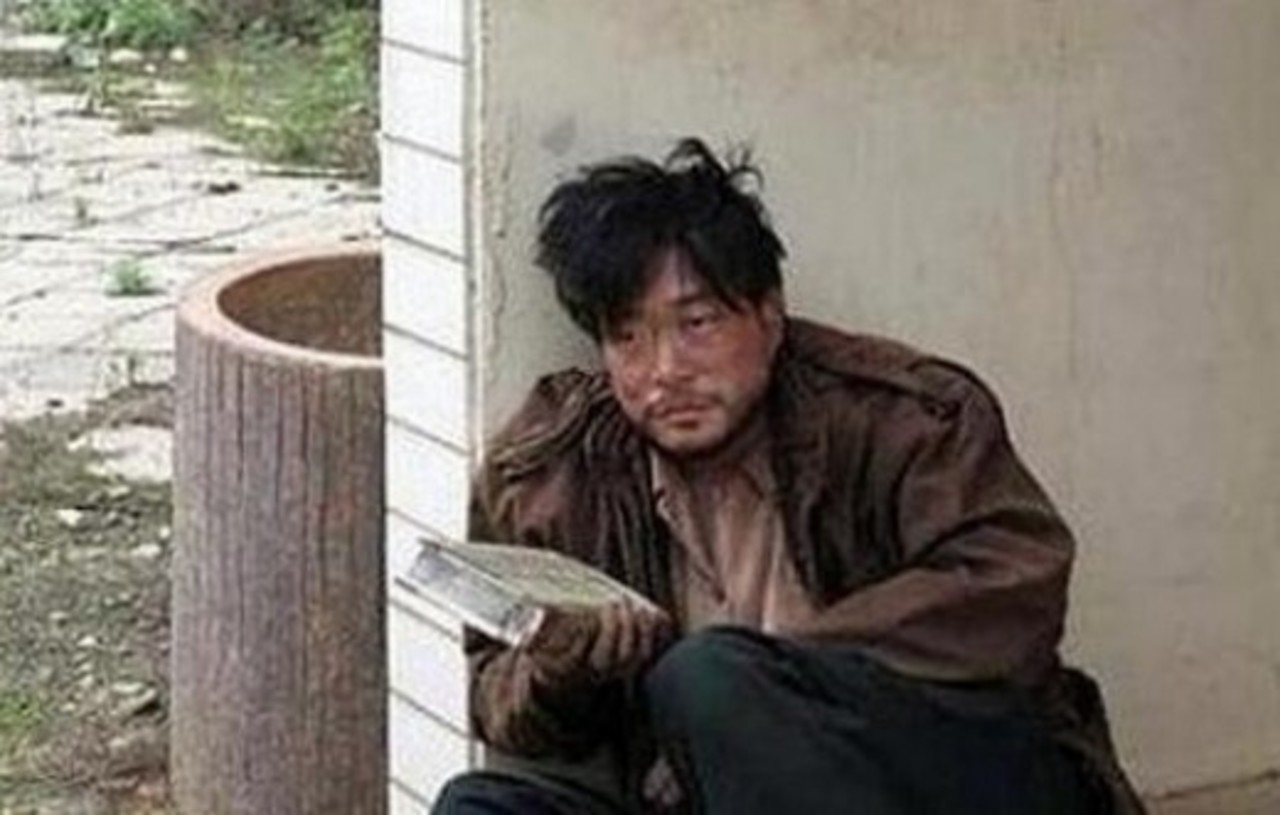
Karma Back! Buddhist Ad Campaign Tries to Reverse Falling Numbers
Radiant smiles invite potential novices into a life of monasticism. “Joining the clergy: the most brilliant choice of my life,” reads the slogan above the good-looking young monk and nun.
Welcome to Buddhist recruitment, 21st century style. Released last November by the Jogye Order of Korean Buddhism, South Korea’s largest Buddhist organization, the poster is an unprecedented attempt to reverse the ongoing decline in monk and nun recruit numbers.
“While 500 monks and nuns were once ordained every year, this number has steadily fallen and now stands at about 150 a year,” the order claimed in an accompanying press release.
So what has gone wrong with the Jogye Order? With recruitment numbers this low, are many of South Korea’s iconic temples and monasteries set to become as empty as its royal palaces, devoid of inhabitants and treated as historic sites? Why are so few people making the “most brilliant choice of their lives,” and is an ad campaign enough to change their minds?
Image Issues
“The order is completely rotten,” said Ven. Daean, a monk who formerly lived at Yongjusa Temple an hour south of Seoul. “After 1,700 years, Korean Buddhism is set for oblivion.”
In 2015, Daean and other monks at Yongjusa lodged a complaint with Jogye Order authorities regarding the allegedly corrupt election of Ven. Seongwol as the temple’s new abbot. They also alleged that Seongwol had a secret wife and twin sons, producing photographic evidence to back up their claims.
The Jogye Order responded by formally expelling Daean. In November 2017, a court in nearby Suwon rejected a damages claim from Seongwol’s detractors, who had sued him for electoral fraud and causing emotional injury, citing lack of evidence and lack of jurisdiction: The judge ruled that the ethical issues at stake were a matter for the order’s own laws, which it had failed to enforce.
Daean’s predicament follows a pattern that has recurred again and again in the order in recent years: Accusations of corruption and illegality — election fraud, gambling, embezzlement, drinking, hidden spouses and children, violence — have frequently been met within the order by silence, denials or indefinite promises to reveal the truth at a later date. Vociferous accusers have been attacked, expelled and ostracized. Buddhist media critical of the order have been blacklisted. And accusers frequently find their accusations falling in a crevasse between civil law, according to which no crime has been committed, and order law, which is not enforced.
Many of these allegations have been substantiated beyond doubt, such as the 2012 video of Jogye monks smoking, drinking and gambling. The video hit the national news, placing a severe dent in the order’s reputation.
The steady flow of scandals may be a major factor deterring seekers of a genuine monastic life — it quickly becomes apparent that institutionalized Buddhism does not always offer this.
Intriguingly, the Jogye Order’s own recruitment ad and press release implicitly add weight to this notion by making no mention of what life in the Buddhist clergy actually involves.
“Clergy are provided with all necessary accommodation, education and healthcare, plus health insurance, national pension contributions, and retirement care,” the press release claims, before listing further specific educational and other benefits.
“When I saw the ad [and press release], I was shocked,” said Kim Geon-jung, an official at lay movement Buddhist Solidarity for Reform (BSF). “It would be all right if it said what kind of religion Buddhism is, and how clerics practice, and what values and religious ideology they will study. But inviting people based on material things like food, clothing, education and welfare to the grave must have looked very suspicious even to people who don’t know Buddhism. I doubt whether people joining monasteries this way will really study and practice in a genuine way.”

An educational official from the Jogye Order, requesting anonymity, explained that the poster and press release were designed to draw preliminary interest from prospective recruits, and that more detailed information about the clerical lifestyle were provided to those that made contact via the phone number and website details provided.
But the pragmatism of the ad also hints at a historical role that Buddhist ordination has played in South Korea for many years: that of a safety net for those whose fortunes in secular society have waned.
One former novice, who is now a professor of Buddhist studies and requested anonymity, recalled how a high proportion of the fellow novices at his ordination ceremony were in their mid-30s or older.
“I overheard some of the senior officiating monks complaining that the older guys were joining in order to receive the benefits,” he said.
The Jogye Order’s periodic shifting of the upper recruit age limit — which now stands at 50 but once stood as high as 60 — also reflects a need to boost membership amid low interest from youngsters.
To some extent, the Jogye Order is stuck between a rock and a hard place: If it targets prospective recruits with more material benefits in mind to keep its numbers up, these individuals are less likely to be motivated to follow lives of asceticism and may end up doing things that further tarnish the order’s image, thus turning off other potential recruits.
Wider Disinterest
It may be unfair to lay the blame for falling recruit numbers solely at the door of the Jogye Order. Broader social trends are taking their toll, too.
South Korea’s most recent national census revealed a sharp rise in the proportion of South Koreans claiming to have no religion, from 47.1 percent in 2005 to 56.1 percent in 2015. But for Buddhists, the shock was particularly great: Almost three million people had abandoned the faith in the same 10-year period. While 22.8 percent of the country’s religious citizens had been Buddhists in 2005, the figure was now just 15.5.
Such a dramatic drop in the overall number of Buddhists is bound to be reflected in clergy recruit numbers: Fewer believers means a smaller pool to recruit from.
The Jogye official who spoke to Korea Exposé also pointed to such wider social trends, rather than the internal problems of the order, as the primary reason for the fall in recruits. It is true that Buddhism is far from being the only South Korean religion to generate internal scandal.

Compounding this problem is the declining social demand for the basic needs met by temples: food, clothing and lodgings. Bernard Senécal, a Jesuit priest and scholar of Buddhism at Seoul’s Sogang University, speculates that this is a challenge faced by Buddhist and Christian monastic institutions alike in South Korea:
“It was a way of life that provided people with social status, the possibility to go and study abroad, no need to worry about what you’re going to eat, how you’re going to dress yourself, where you’re going to stay,” Senécal said. Since the 1970s, he asserted, the state had increasingly provided similar benefits in secular form.
Buddhism may also be doing itself no favors through its relatively low degree of engagement with society outside temples. A 2011 survey found that of religion-affiliated welfare facilities (for senior citizens, women, children, etc.) run by religious organizations, only 13.2 percent were run by Buddhists, compared to 50.9 percent by Protestants and 29.9 percent by Catholics.
Park Young-jai, a leading member of lay Buddhist organization the Seon Way Association, believes greater engagement could help improve Buddhism’s image and attract believers back. He contrasts the South Korean situation with that of Taiwan, where Buddhism has a greater presence in society.
“Buddhism in Taiwan is really alive. Brilliant Seon masters are making great [spiritual] progress, and are very active in society too. So they’re respected by the Taiwanese people.”
This lack of engagement can leave Buddhism with an opaque and esoteric image among young South Koreans, said Dr. Kim Su-jung, assistant professor of Religious Studies at DePauw University.
“The younger generation in Korea does not have an opportunity to learn about Buddhism in the highly capitalized and secularized Korean society. In other words, they learn about the history of Buddhism during their schooling periods, but beyond that, there is no public channel to learn what it would be like to be a Buddhist monk or nun,” Kim told Korea Exposé.
“To make the situation worse, the major Buddhist organizations in Korea have also failed to improve the religion’s image of being backward, not to mention [offer] outreach programs for young people.”
Even those that do get the chance of a first-hand encounter with Buddhism may be put off by the uncompromising approach to tradition and meditation, according to Park Young-jai of the Seon Way Association:
“Seon [the Korean pronunciation of ‘Zen’] is too difficult. If you invite people who’ve never meditated before to sit [in the lotus position] for 40 minutes, they can barely breathe. It’s hard, and they run away. I think that school trips that make students experience Seon meditation for too long actually leave them with bad memories.”
Re-engaging with the World
The idea of an otherworldly quest for enlightenment may still attract some, but can and should it take up the rest of a lifetime? Should joining the Buddhist clergy mean disappearing into a temple and withdrawing from society?
Park compares the path of Buddhist monk to that of an academic:
“In academia, you spend about five years getting your doctorate, then you graduate and live as a scholar, cultivating your own students. No one just writes essays her whole life. In the same way, if you’ve experienced deep insight, you should use it to help the people around you. If you set that kind of example, people will automatically respect you.”
Surely using its considerable wealth to provide more welfare, education, healthcare and other social services, and to place more monks and nuns of the front lines of society, would improve Buddhism’s image, render it more accessible and attract more believers. Are a monk and a nun reaching out of a poster enough to do the job?
The Jogye Order official pointed out that the current recruitment period ran until Feb. 28, making it too early to confirm total numbers, but that anecdotal evidence from the order’s telephone advisers suggested an increase in inquiries.
Cover image: Detail from the Jogye Order’s recruitment poster in full. (Image courtesy of the Jogye Order of Korean Buddhism)
